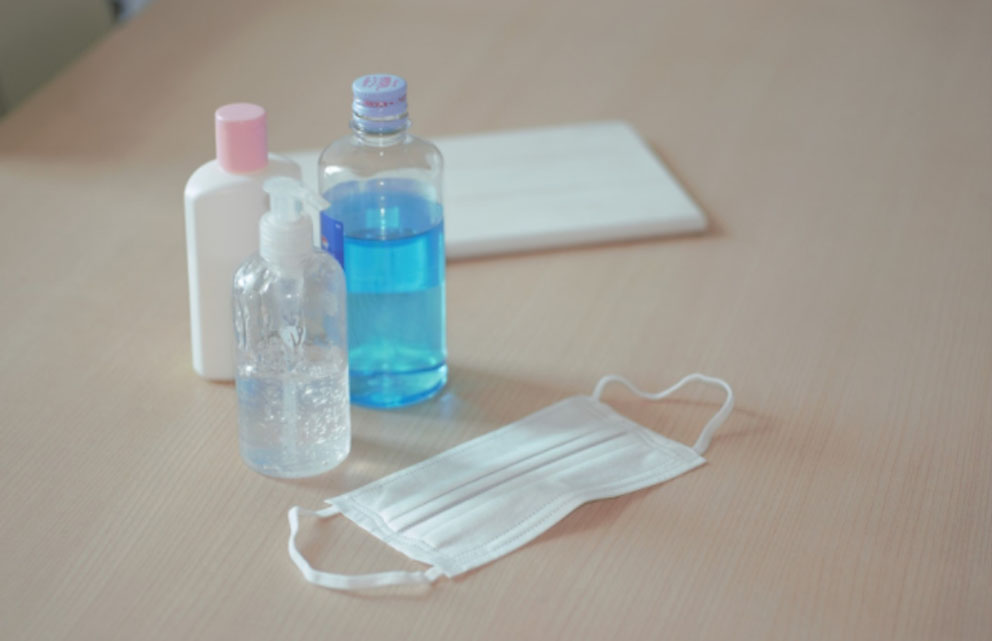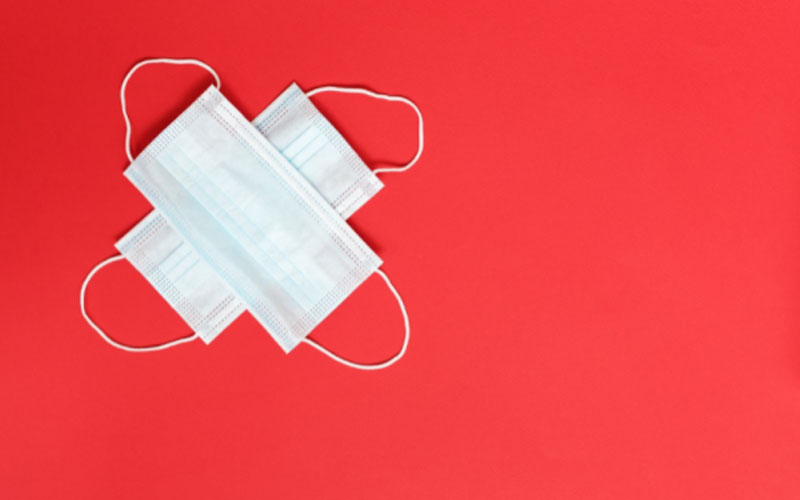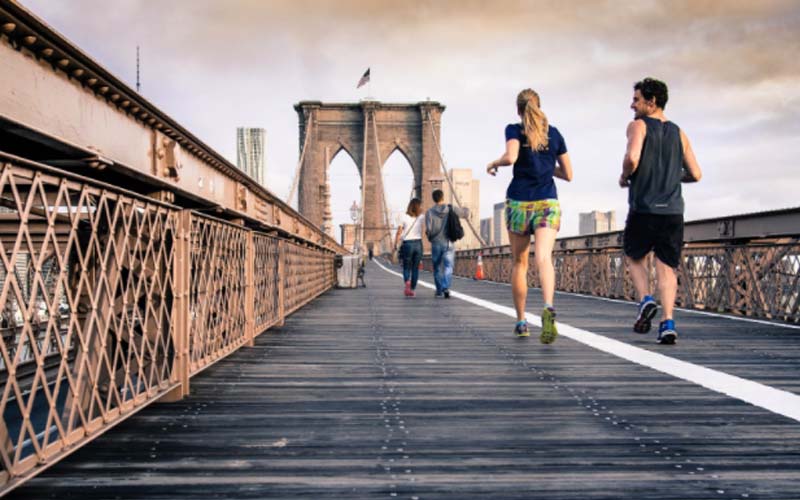Source : Pixabay
It has been a long two years for many people around the world since the Covid-19 pandemic reared its head in late 2019. What started as an isolated incident in China quickly spread to other parts of the world, leading to lockdowns and massive changes in how people conducted their business. These lockdowns saw many people either lose their jobs or switch to working from home until a vaccine rollout began late last year. Although gradual, things are slowly getting back to normal in many parts of the world despite the pandemic still spreading all around.
We are going to look at how people can still stay healthy and safe as the world slowly gets back to normal, the countries that may be reopening soon, and the things people have to pay attention to as they navigate through these trying times.
Table of Contents
Countries and Regions That Might Reopen Very Soon
It is now an accepted fact that the virus will not go away anytime soon, and this is what is making some countries and regions start rolling out reopening plans to get back the time lost in the last 12 months. Some of the countries and regions at the forefront of the move include the following.
United States

Leading the pack with the most COVID-9 deaths and infections, the United States is the most hit nation in the world, but with the new administration, things are quickly getting back in control. At one point, daily deaths were above 4,000, and that has come down to 47, thanks to mask mandates and a very aggressive vaccine rollout. Some states already began opening last year but had to lock things down again when the virus started surging again. However, with the highest vaccine rollout in the world, more states are joining the fray to reopen and get back to normal. You can find a detailed list of all the opening dates for each of the 50 states in America and plan accordingly.
United Kingdom

At some point last year, the United Kingdom was among the worst-hit nations in Europe, with daily deaths peaking at four figures at some point. The news two days ago that the UK had recorded zero deaths for the first time since everything went downhill was a relief to many. Reopening plans began on March 8, when restrictions started being uplifted in a four-step process. The second phase kicked in on April 12 with restaurants and other outdoor attraction sites. With vaccine rollouts also in high gear, the next phases of reopening will be taking place soon enough, with flights from certain regions already coming in without any restrictions.
France

France has had three lockdowns since the pandemic began sweeping the vast European nation in early 2020. They, too, peaked with mad numbers at some point before nationwide lockdowns brought everything to a semblance of normalcy. President Macron made headlines a few weeks ago by announcing that the country will be open to visitors who have been vaccinated by June 9th.
The country has already been open in most parts since May 19th, with museums, cinemas, and other outdoor establishments operating within less stringent curfew limits. The current curfew was pushed from 7 pm to 9 pm, and it is expected to be completely done away with on June 30th. Visitors to France have to vaccinate first and quarantine themselves for seven days before they are allowed to mingle with other people.
Italy

Italy was the first European nation to be hit with COVID-19 in early March last year, and a lot of people died in the process as the world was still trying to grapple with the disease. The nationwide lockdowns did help to ease the spread of the pandemic a little, but the journey back to normalcy has been long and continues to face all kinds of challenges.
Failure to follow protocols by some people opened the country to another wave that took everything back to square one. However, Italy has now been able to bring things back to normal a little and plans to repone the country have already begun in some parts. The country has been categorized into three zones; yellow, orange, and red. Yellow zones have the least restrictions, while red zones are being heavily monitored.
Spain

After Italy, Spain also had its fair share of struggles with the pandemic. The government resorted to lockdowns to reign in on the uncontrolled spread of the pandemic as it threatened to bring the economy of the European nation to its knees. The country has been under a six-month state of emergency that elapsed on May 9, which had instituted mandatory nationwide 11 pm curfews.
As much as the country is looking forward to reopening the country, much of the decision is not down to the central government, but the final say lies with the local regional governments. The Catalan region, for instance, is set to continue instituting curfews until they are sure that the disease is firmly under control.
New Zealand

New Zealand was among the very first countries that was able to reign in on the pandemic, thanks to quick thinking and a proactive government. It was the first nation to report the first infection-free day and has continued to build on that by rolling out nationwide vaccination plans with the aim of vaccinating at least a million people by the middle of June.
The chances of New Zealand being the first country to permanently stop the pandemic within their borders is very high as it is home to about 5 million people only. The phased reopening has been ongoing, with visitors subjected to strict quarantine measures before being allowed into the country. Once the vaccine rollout is done, there’s a possibility the entire country will be open to business even before the end of the year.
Germany

Germany was not as hard hit compared to most of its neighbours because it was quick to take action by studying what other nations were going through. There was a nationwide lockdown that covered the airspace in the early months of 2020. Currently, the nation still has lockdowns in many parts, with phased reopening plans underway since May 10. Nightly curfews are still ongoing as the government looks to reopen schools and eateries slowly over the course of the year. For fans of the famous Oktoberfest, more bad news as the vent will again not take place this year.
India

There was very little data coming out of India when the pandemic was peaking in other parts of the world. Things changed this year when the COVID-19 infection cases suddenly skyrocketed through the roof, largely due to a lack of lockdowns. At the moment, it’s hard to tell when the vastly populated nation will be reopening since it is still dealing with the worst infection rates. Nationwide lockdowns will be needed, although it is hard to see how that will be enforced in a country with over a billion people.
Ways to Protect Ourselves and Stay Safe
It is hard to imagine a future without COVID-9 at the moment owing to how infectious it is. Therefore, as many countries are starting to re-open, it is up to the people to continue observing safety protocols to keep themselves safe from getting the diseases and spreading them further. The following are some of the things you can do to keep yourself safe throughout the reopening phases.
Wear a Mask

Despite the politics around it, masks have been proved over and over again to be effective against COVID-19 viruses. When venturing outside, make sure you wear a mask at all times. There are many types of masks that you can choose from; the ordinary surgical one is more than enough to get the job done. CDC has advised people from the age of 2 to wear masks when outdoors. Many establishments and businesses have already instituted rules for wearing masks by turning away anyone that comes not wearing one.
Social Distancing

Another great measure that has been in use from the day the pandemic started taking root all over the world. It was noted much earlier that the virus was airborne but had difficulty moving for more than 6 feet. This information is what led to the 6 feet social distancing rules to be enacted to stop the spread of the virus from one person to another. Maintain the 6 feet distance even when you are in a house with a sick person and always combine that with wearing masks to limit the risk further.
Get Vaccinated

This has been another highly politicised issue that has led to a rift between people who believe that vaccines carry some nefarious things inside. However, vaccination has always been the last stand against viruses of this nature. There are a number of vaccine types being rolled out around the world, and everyone should make it a personal endeavor to get vaccinated as fast as possible. It has already been established that people who are vaccinated have a lower risk of ending up in the hospital.
Avoid Crowds

Avoid crowds at all costs because that’s where the virus spreads the fastest, even when you adhere to all the protocols. Concerts, crowded restaurants, supermarkets, and malls should be avoided at this time until everything is under control in the near future. Indoor spaces without any form of proper ventilation are another big no. If you happen to be relaxing at home with a group of people, censor everyone’s social distances, wear a mask, and all the windows are kept open to let in the fresh air.
Sanitize Hands

Keeping your hands clean at all times is another effective and the simple act of washing them with soap and water is all it takes to lower the risk of being infected. The recommended duration is about 20 seconds of aggressive washing with soap and enough water every chance you get. For those that may not have access to water all the time, then getting a hand sanitizer with 60% alcohol would get the job done. Limit the number of times you touch your eyes, nose, and mouth as they are the most common entry points for most viruses.
Monitor your Health

The human body will always tell you when something is wrong and you will save yourself a lot of pain and money if you pay attention. The moment you start seeing the common symptoms, then get medical aid immediately, even if it ends up being a false alarm, especially if you have underlying conditions. It is better to be safe than sorry. Monitor your body temperature, your oxygen levels and any other vital signs that may give you some information in regards to the overall health of your body.
Rethink Work and School Settings

One thing that pandemic has brought to the attention of the people is that it has always been possible to work from home and still get the work done. It is about time people started rethinking where they can work from, as this is important in minimizing contact with the outside world. Employers should allow people to work from the comfort of their homes,and schools should continue conducting online classes until the pandemic is brought under control. It will take time for adjustments to be made, but all these measures are necessary to ensure that things return to normalcy as soon as possible.
Switch to Online Shopping

The visits to the grocery store or your favourite eatery will have to be cut down significantly if you want to stay safe. Fortunately for many people, online shopping was already established long before the pandemic began, so using the same infrastructure is not hard. If you can order everything online and have them delivered to your house you would be keeping yourself and your family safe since you will be limiting contact to only the delivery rider. If you have to go shopping, then make sure you are masked up properly, are alone, and observe the social distancing protocols.
What to Pay Attention to in Hot Weather

When the pandemic was beginning to spread like wildfire in early 2020, there was a wrong assumption that was made in regards to the virus that it would disappear once the summer heat came. The opposite actually happened. The rates of infection tripled up in places like America and worsened in other parts. To ensure that you minimize the risks of getting infected with COVID-9, there are some tips that you have to pay attention to, and they include the following.
Humidity: A number of scientific journals have been penned in the last 12 months or so that have drawn a link between the ease of COVID-19 spread and high humidity. A warm and wet climate makes it easy for the virus to stay airborne longer as it can cling onto the moisture in the air. This means that countries in the tropical regions where humidity is high in the summer months have to observe stricter regulations as far as getting the virus under control is concerned.
Temperature: It had been wrongly assumed that extreme cold and hot summers would naturally deal with the virus within no time. That didn’t happen, which proves how resilient and hardy the coronavirus is. What was found, however, is that the rise and fall of temperatures had very little impact on the speed of transmission. Angina, the laid down protocols in hot and dry places should be adhered to with extra caution to ensure the virus is eliminated in the near future.
Blood Pressure Level: Hypertension is a dangerous condition that seems to make everything worse and turning even the most harmless of diseases into a dangerous killer one. The same has been observed with COVID-19. People who suffer from hypertension have had a hard time dealing with the pandemic as it is an underlying condition that has already compromised the body’s immunity making it hard for the body to fight COVID-19. Anyone with high blood pressure is advised to take extra precautions and monitor their condition through the use of a home-based blood pressure monitor to be on the safe side.
Heat-Related Complications: Being exposed to extreme heat can lead to a heat stroke, among many other complications. Suffering this in a pandemic only serves to expose your body for more attacks as your body’s immunity will take a significant hit leaving it powerless when COVID-19 finally kicks in. If you know you are vulnerable to heat make sure you avoid it and stay indoors as much as you can.
What to Avoid

There’s still more about the coronavirus that people don’t know, and as scientists study it, more is being unearthed. However, much of what we know so far has proved effective against the disease. There are things you should not do when dealing with COVID-19, and they include the following.
Do not stay too long in the sun if you are affected by extreme heat. Getting a heat stroke at a moment like that would only make matters worse for you, and with hospitals full already, getting help would be hard.
Forgetting to apply sunscreen if you have sensitive skin will only end in disaster for you. If you have to go outside, make sure you apply enough sunscreen on your skin just to be on the safe side.
Not hydrating is another thing you should never do. Water boosts the body’s immunity against many things, and although it may not be able to stop COVID-19, being dehydrated will lead to other unnecessary complications that may be too much to deal with in a pandemic.
Do not neglect your medical checkups with your doctor if you have serious underlying issues like heart diseases. If a physical visit is impossible, then make a teleconferencing appointment just to update them on your health so they can give you the right advice to keep you safe from having to get the virus.
How to Improve your Immune System
It takes more than observing the laid-out protocols to keep the pandemic at bay; there are certain things that every individual must actively take upon themselves to boost their immunity. They include the following.
Maintain a Healthy Lifestyle

If you have been putting off starting exercising and eating a healthy diet, then this is the time to revive those plans. Keeping the body fit at all times makes the immunity system to be active throughout, and when you combine that with the right food, then you will be giving yourself the best chance at fighting the disease. Cut smoking, alcohol, and junk food from your life to allow your immunity to fortify itself the natural way.
Eat Immune-Building Foods

A balanced diet is not enough, you have to go for the foods that directly impact the body’s immune system. These are foods that are rich in vitamins and antioxidants which not only get rid of toxic substances in the body but provide the right nutrients for the cells involved in fighting diseases to get stronger and more active. Increase your intake of foods rich in fiber and prebiotics like bananas, asparagus, leafy greens, berries, and all forms of fruits.
Use Essential Oils

Essential oils were already famous for their many good attributes, but their stock has gone through the roof in this pandemic, all thanks to how good they are at boosting the body’s immunity. Eucalyptus and tea tree oils have been singled out by professionals to have the right combination of elements to ward off infections. Simply add them to a diffuser and inhale the fumes or add them to the bathing water. You can also add them to a hand sanitizer so that they can be absorbed through the skin.
Fresh Air

As much as going outdoors unnecessarily is discouraged, it is a good idea to get some fresh air and plenty of warm sunshine during the day. If you live in an isolated area that allows you to take walks without coming into contact with other people, then you should take advantage of that and take walks in the woods. The sunshine will boost vitamin D, and the fresh air will make your body get rid of all the toxic substances, making it strong enough to fight off anything that comes knocking.
Maintain Hygiene
The simple act of washing the hands may seem mundane and repetitive, but it is the first line of defense against the virus. Wash your hands as regularly as you can using the normal hand wash or soap. Wipe all the commonly used places with disinfectant, and always try to avoid touching your face with unwashed hands.
Conclusion
It is still unclear on the timeline of this pandemic. While some countries are registering success in fighting it off, some are still struggling with rising infection rates. Unless the virus is wiped off completely, all it would take is one reckless individual to restart the wave again. It is up to the collective collaboration between the people and the government to ensure that everything is brought under control as soon as possible. For those battling with underlying conditions like hypertension, visit our website and get all the tips that will help you keep yourself safe.



